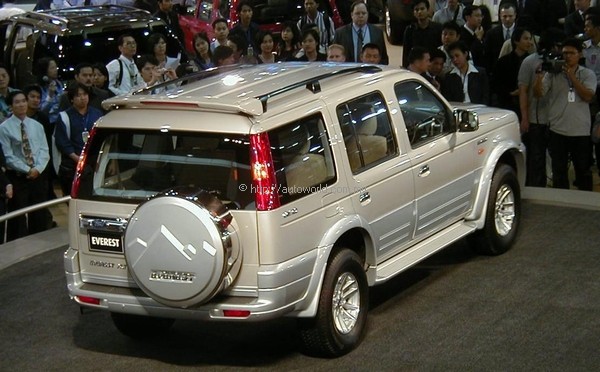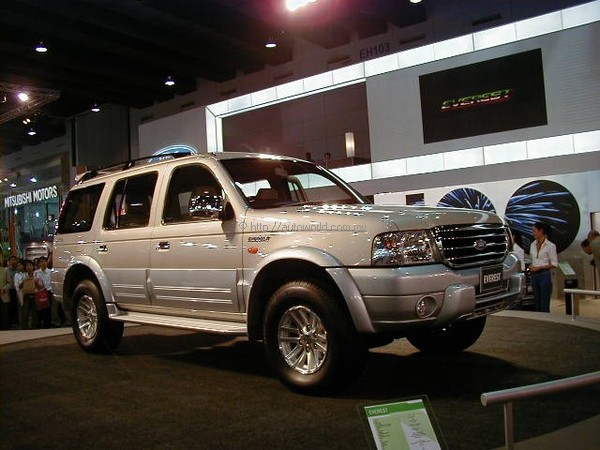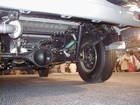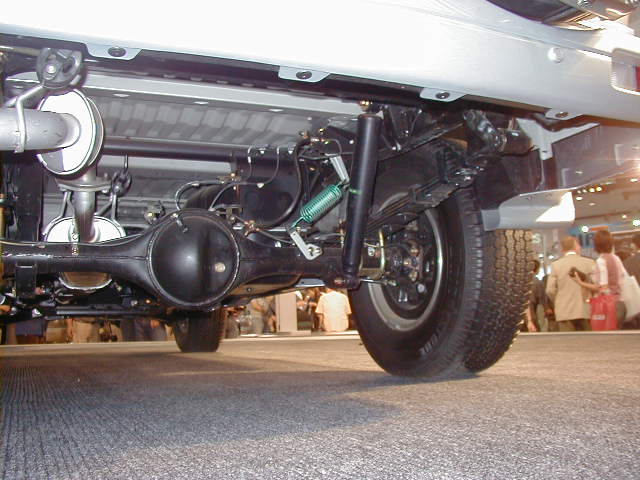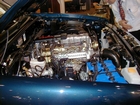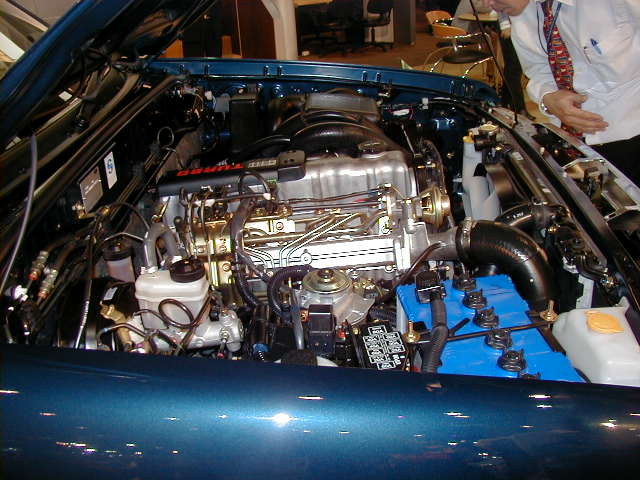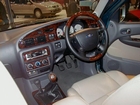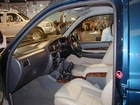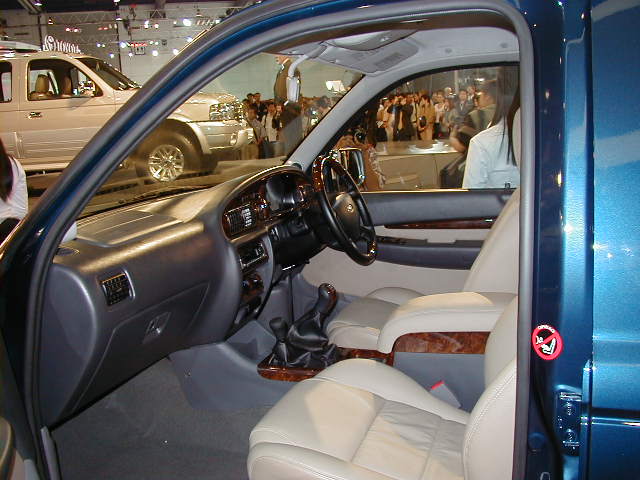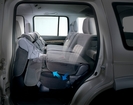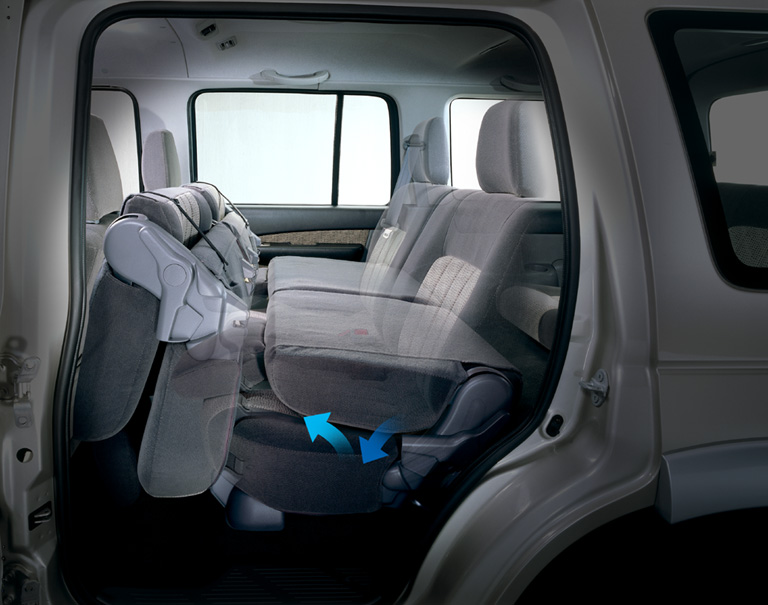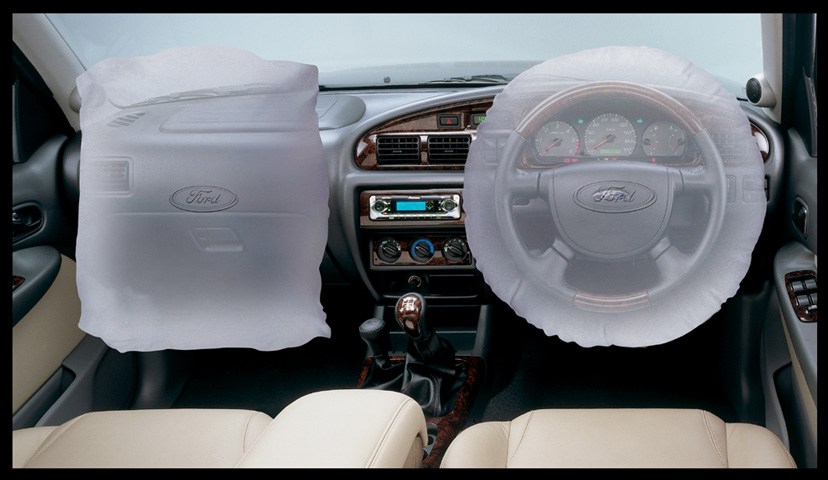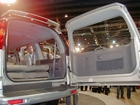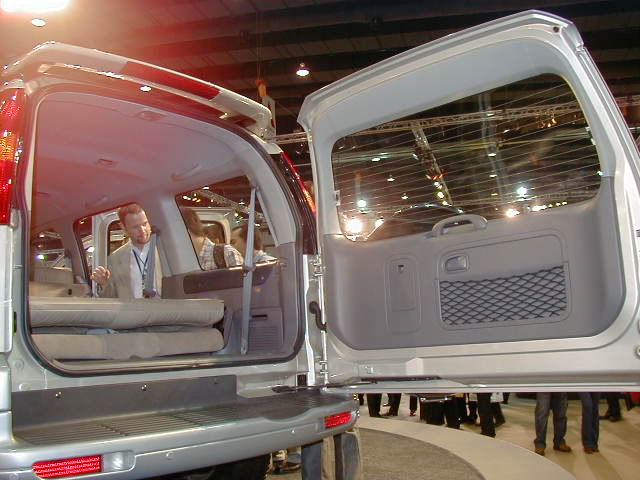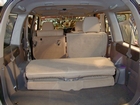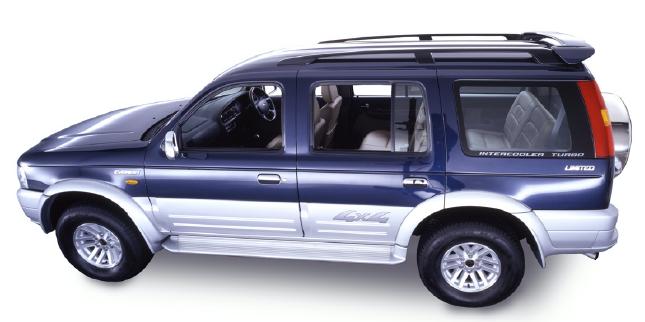Ford Everest
Brand new models usually make their debut in one of the centres of the global auto industry – Tokyo, Detroit, Frankfurt, Paris – and it is rare that a world premiere occurs in ASEAN. But with AFTA now a reality, this region with a potential 500 million consumers during this decade will be a significant market for many companies. So perhaps in recognition of the growing significance of AFTA (the ASEAN Free Trade Area which started this year), Ford chose the Bangkok Motor Show to introduce an entirely new model – the Everest – which will eventually sell in 50 countries around the world.
The choice of the Bangkok was also appropriate since this model, said to be designed with Asian consumers in mind, will be built at the AAT plant (a Ford-Mazda joint-venture factory) in Rayong, southeast of Bangkok. That is also where the Ranger is built and exported to some 150 countries. And there lies the clue to the ‘genes’ of the Everest – it is related to the highly successful pick-up.
Development of the Everest began around four years ago and it’s been a rather well-kept secret in Ford ASEAN. One reason was that the actual name of the product was forbidden in all company communications and it was only referred to by its model code, ‘U268’. In fact, U268 (sounds like some German U-boat!) became so synonymous with the new model that Chuck L. Bambenek – the chief platform engineer who headed the development work – had to be reminded to use the commercial name for the new Ford during the press briefing!
Mr Bambenek revealed that the development program cost some US$100 million and this figure included investments needed to manufacture the Everest. It would have been more than double the figure if a brand new platform had also to be developed. By being able to adapt the latest Ranger platform, a lot of time and money was saved.
While it may seem like this variant of the Ranger was something Ford would have planned back in the mid-1990s when the Ranger was being developed, this was actually not the case, as Mike Pease, Regional Manager for Ford Asia-Pacific Marketing, Sales and Service, explained: “When we launched the Ranger, we said that there would be some derivatives in future but at that time, a model like the Everest was not specifically considered. We certainly wanted to find more ways to use the Ranger platform since this would be a key to competitiveness through getting greater economies of scale,” he said. He added that a great deal of consumer research was carried out in South Africa, Malaysia and Thailand to understand what was desired.
It’s interesting that the creation of a SUV variant out of a pick-up platform follows the same route taken for the Explorer. The Explorer became so successful that it was ‘spun off’ as a separate model line and became the world’s best-selling SUV (albeit mostly sold in North America). And in a reversal of evolution, so to speak, there is now a pick-up variant developed from the Explorer!
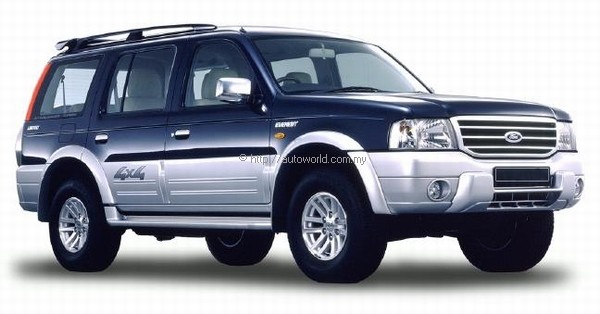 |
Pure SUV styling
The styling of the Everest is pure SUV and looks like an Explorer. Various frontal presentations were considered, said Mr Bambenek, but it was the bold front end of the Ranger – which can also be seen on the F-Series trucks (the most widely sold vehicle in the world) – that consumers liked.
In making variants, one of the ways to save money is to use common parts. The platform – chassis, suspension, brakes, etc – is shared with the Ranger and so are some body panels like the front doors and the bonnet. However, all other sheet metal and glass is unique to the Everest.
Spare wheel position
One area which went through considerable debate among Ford designers and product planners was the location of the spare wheel. If you look at the SUVs of American companies, the spare wheel is usually not on the rear door. It is either in the cargo floor or hung underneath.
“When we started designing the Everest, that was how it was going to be – just like the Ranger. But consumers told us that if we wanted this model to be an ‘authentic’ SUV, its spare wheel had to be on the rear door,” Mr Bambenek said.
“In the Ranger, the spare wheel is hung below the rear end and to relocate it to a new position on the rear door would mean some extra engineering work but more critically, it would add US$70 – $100 to the cost because of the strong wheel support needed,” he explained.
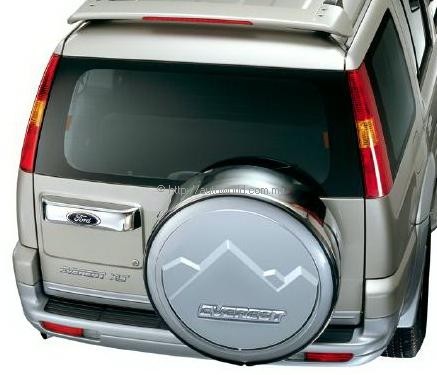 |
The decision was finally made in South Africa when Mr Bambenek and his team spoke to some typical SUV users. They told him that if the wheel was underneath, it would be hard to extract if the vehicle was stuck in mud. But the puzzling thing was why they wanted a spare wheel in that situation if a tyre was not punctured.
“As I discovered, they use the spare wheel as an ‘anchor’; they take it further down the road, attach the winch to it and then bury it in the ground. Then they can pull the stuck vehicle out! Well, that convinced me that the spare wheel had to go on the back door and it wasn’t there just for the looks either,” Mr Bambenek said. He added that he did not want to use a swing-out frame for the spare wheel as this would always rattle when the vehicle was driven over rough roads.
Tuning the Ranger platform for comfort
As it uses the Ranger platform, this means the Everest design has ‘body-on-chassis’ (BOC) construction, the traditional way of building pick-ups and SUVs. Typically, the bodyshell is bolted onto a chassis of two longitudinal beams and the merits of this are in load-carrying capability. Smaller SUVs like the Escape use monocoque construction which has the chassis and body welded as a single unit, providing better ride and handling as well as keeping weight down.
The other thing about the Ranger platform is that it has double wishbone independent front suspension and leafspring rear suspension, also chosen for load-carrying capability (even though most Ranger owners do not load up their vehicles fully). This is also retained for the Everest and a lot of work went into making the level of ride comfort and handling of a standard that is better than the Ranger’s.
“The usage of the Everest will be different and we have provided what we believe is a level of ride and handling that is best-in-class,” declared Mr Bambenek. “In fact, to tune our suspension, we even brought in a specialist – a man with a doctorate in vehicle dynamics – to sharpen the handling and we also did a lot of real-world testing on a lot of different terrain.”
Mr Bambenek is confident that the Everest ‘is notably superior when changing lanes and in tight cornering’. Its vehicle dynamics are said to offer predictable performance in varied driving conditions and it should handle comfortably in both city and off-road situations, keeping driver fatigue down and provide good passenger comfort.
The Everest is not as long as the Ranger but its overall length of 4958 mm and wheelbase of 2860 mm make it a longer vehicle than the Land Rover Discovery and Toyota Land Cruiser Prado. However, its link to the Ranger platform also limits its width to 1805 mm, which is a lot narrower than the Discovery’s 2190 mm. To compensate, the roof is high at 1835 mm and the floor is also some 210 mm above the ground.
Two powertrains, 4WD or 2WD
Two engines are presently available for the Everest – the familiar and well-proven WLT 2.5-litre turbodiesel of the Ranger and a 2.6-litre 4-cylinder 12-valve petrol engine. The turbodiesel’s performance is well known and respected as it is among the most powerful in its class while the petrol engine is a 90 kW/122 bhp, 206 Nm unit which is likely to be for markets where a large petrol engine displacement is not penalised.
Customers will be able to choose from a choice of transmissions and drivetrains: 5-speed manual and 4-speed electronic automatic transmissions, and 4WD or 2WD (rear wheel drive) drivetrains. With 4WD, there is a transfer case with the usual high and low range to extend off-road capability.
Top-class safety
Ford has always given good attention to occupant safety but since the Firestone-Explorer controversy 5 years ago, the company has stepped up its efforts in the field of automobile safety and made its in-house standards more stringent and where possible, made critical safety features standard.
For the Everest, Mr Bambenek said that its safety standards are “among the best” and it meets the core Ford Safety Design Guidelines which apply to all Ford vehicles worldwide, as well as includes some additional features which are not mandatorily required in Everest markets. For example, front airbags and 4-wheel ABS (with EBD) are standard and every one of the occupants has a seatbelt.
A people-carrier
Moving inside, it is evident that this is a people-carrier with three rows of seating for up to seven occupants. The second row is a bit higher than the first and the third row higher than the second, like in a cinema. Special effort went into ensuring good headroom for the third row passengers although Mr Bambenek admits that the cushion height is on the low side.
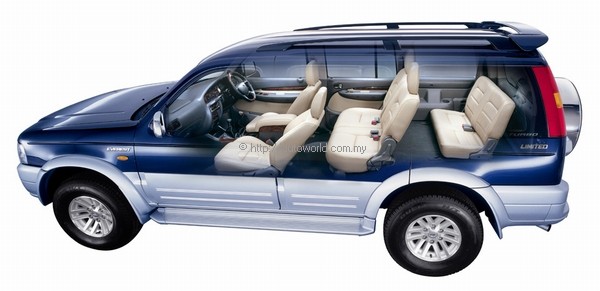 |
Ranger owners will recognise the dashboard which is identical but has wood trim (some versions) and a two-tone colour scheme. “The interior will give an impression of spaciousness and luxury, and there are many small ‘surprise and delight’ features which we have made sure to incorporate,” said Mr Bambenek.
Clearly the result of the extensive research into customer preferences, the Everest cabin has lots of storage spaces, pockets for cellphones, cupholders for every occupant, and a unique air-conditioning system that ensures generous amounts of air for the rearmost occupants.
“We realised that in many of the Everest markets, air-conditioning will be important. We have provided two additional sets of vents on the ceiling which will distribute cool air down onto the face and chest of passengers,” Mr Bambenek explained.
Getting in and out has been made easy with the SYNCHRO action for the second row of seats which are divided equally. A single-release mechanism will tip the seat forward and also get it into a double-folded position to create a wider opening for moving into the third row.
As for the third row, this is a bench seat which can be folded flat. Except for Everests sold in Thailand, the seat can be easily removed if extra space is needed in the cargo area which normally has a volume of 2055 litres.
Everest in Malaysia
While not willing to reveal the launch date of the Everest for Malaysia, Mr Pease said that he expects most of the 50 markets to have Everests in Ford showrooms within a year. Most markets will get the vehicles in built-up form from Thailand but those in Malaysia will be assembled locally.
In Thailand, there is already a class of SUVs which are derived from pick-up platforms so the new Ford has obvious rivals. However, in Malaysia, it is difficult to see where the Everest will do battle. Though its price positioning is supposed to be ‘below the Escape and above the Ranger’, it is not likely to be a ‘Toyota Unser killer’ – it’s too big both in body size and petrol engine capacity.
Given its size, it would seem to be a challenger in the full-sized SUV segment. This segment is still sizable – about 2,500 to 3,000 units a year – and for many years, the main models have been the Mitsubishi Pajero and Toyota Land Cruiser. The Mitsubishi, a 7-year old model, has dominated and it is understood that UMW Toyota Motor is not planning to assemble the latest Land Cruiser Prado generation due to its high cost.
The Everest could well fill the empty space left by the Toyota and could well find many buyers tired of the elderly Pajero – especially if its price can be close to the Thai price which is the equivalent of RM97,000 (presumably for a base Everest turbodiesel).
EVEREST DIMENSIONS
Overall Length: 4958 mm
Overall Width: 1805 mm
Overall Height: 1835 mm
Wheelbase: 2860 mm
Tread width: 1479/1470 mm
Ground clearance: 210 mm






